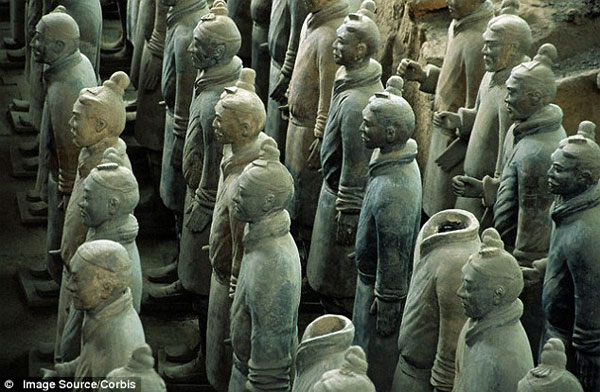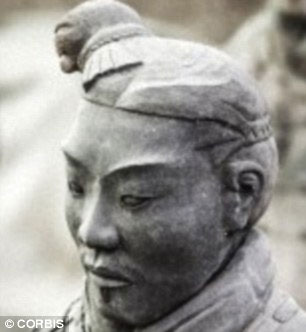New discovery of terracotta army in the tomb of Qin Shihuang
By modern means, scientists have recently proved that the terracotta army in the tomb of Qin Shihuang is the "replica" of an army of flesh and bones.
>>>The terracotta army of Qin Shihuang is "painted" with eggs
>>> New hypothesis about terracotta army Qin Shihuang
These terracotta statues are proven to follow the prototype of a real army, not a mass product.

Since being discovered by locals in 1974, experts have questioned whether the sizes of these terracotta warriors were modeled after real people or that they were just products of production lines. Export a series of random details such as hairstyles, then insert them to make them easy to distinguish.
Now, experts have created 3D computer models of statues, focusing on the ears because they think its shape is as unique as fingerprints, which will help determine that Simulated warriors from real people.

National Geographic channel said a group of archaeologists from University College London (UCL) worked with experts of the Mausoleum of Qin Shihuang in Lin Dong, China to obtain an ancient model from the back of the warriors.
They measure proportions on faces, focusing on the ears because their different forms are used to identify individuals.
Experts argue that if the simulated warrior statues from real people their ears must be of different shapes.
Because the statues are tightly packed together in the burial pit, using a scanner to simulate 3D images of ears will not cause concern to damage the ancient originals.
After working with 30 simulations, the experts discovered that no ears are exactly the same and this difference is the same as in real people. UCL archaeologist Marcos Martinon-Torres said: 'From these early models can show that terracotta troops seem to be portraits of real warriors.'

The team will continue to work on a variety of warrior models along with more facial features to be sure to identify them as individual copies.
This study seems to reinforce the findings of retired German historian John Komlos, who discovered that different heights of terracotta warriors are very close to the height measured by Chinese men. In the 19th century, he said, "The size of terracotta statues can represent the actual physical stature of ancient Chinese infantry."
Reference: Daily Mail
- The sophisticated weapon of the terracotta army in the tomb of Qin Shihuang
- Video: The army escorts Qin Shihuang to death
- The deadly weapon of the terracotta army, the tomb of Qin Shi Huang
- Artists build terracotta army Qin Shihuang used to eat dog meat
- The Greeks built an army to guard the tomb of Qin Shihuang
- Discovering foreign soldiers in the tomb of Qin Shihuang
- The mystery of the weapons inside the tomb of Qin Shihuang - thousand years is still sharp
- New theory about terracotta army Qin Shihuang
- Qin Shihuang's terracotta army was painted with eggs
- The secret still covers the tomb of Qin Shihuang
- Video: Qin Shihuang's process of making terracotta army
- New discovery in the tomb of Qin Shihuang
 Discovered an ancient centipede fossil 99 million years old
Discovered an ancient centipede fossil 99 million years old Discovered bat-like dinosaurs in China
Discovered bat-like dinosaurs in China Discovered a 200-year-old bronze cannon of the coast
Discovered a 200-year-old bronze cannon of the coast Discover 305 million-year-old spider fossils
Discover 305 million-year-old spider fossils